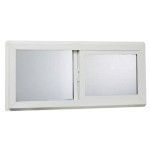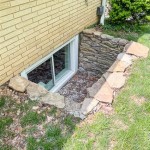Removing a Heating Oil Tank From Your Basement
Heating oil tanks are a common sight in many older homes, providing a source of heat during the colder months. However, these tanks can present a number of challenges for homeowners, including potential leaks, fire hazards, and the need for regular maintenance. If you're considering removing your heating oil tank from your basement, there are several important steps to take to ensure a safe and efficient process.
1. Assess the Tank and Plan for Removal
The first step in removing a heating oil tank is to assess its condition. This includes checking for any signs of rust, corrosion, or leaks. If the tank is in poor condition, it may need to be professionally removed and disposed of. It's also important to consider the size and location of the tank, as well as any potential obstacles that may hinder its removal.
After assessing the tank, you'll need to develop a plan for its removal. This plan should include the following:
- A detailed assessment of the tank's condition and potential hazards.
- A plan for removing the oil from the tank.
- A plan for disconnecting the tank from the heating system.
- A method for transporting the tank out of the basement.
- A plan for disposing of the tank.
2. Preparing for Removal
Before attempting to remove the heating oil tank, there are several important preparations that should be made. This includes:
- Emptying the tank: A professional oil company should be contacted to empty the tank, removing all the oil and ensuring the tank is completely drained.
- Disconnecting the tank: The tank must be disconnected from the heating system. This involves disconnecting the fuel lines and the vent pipe.
- Preparing the basement: Clear any obstacles around the tank, such as furniture or boxes. You may also need to remove some drywall or flooring to allow the tank to be removed.
- Hiring professionals: It is highly recommended to hire professionals to remove the tank. This ensures the process is safe, environmentally friendly, and fulfills local regulations.
3. Removing the Tank
Once the tank has been emptied and disconnected, it can be removed from the basement. This will likely require a team of professionals with the proper equipment. The tank will either need to be lifted up and out of the basement or removed through a doorway or window.
Throughout this process, safety is paramount. Professionals should utilize proper lifting and handling techniques. Any potential hazards, like exposed wiring or support beams, should be addressed and mitigated.
4. Disposing of the Tank
Once the heating oil tank has been removed from your basement, it must be disposed of properly. This includes following all local regulations and environmental guidelines. Many local governments offer programs for the recycling or disposal of old heating oil tanks.
It is highly recommended to contact your local waste management authority to ensure that the disposal is carried out in a safe and environmentally responsible manner.

How To Remove An Old Oil Tank Www Professionaltank Com

Basement Oil Tank Removal Tanks Removed Hudson Valley Ny

Heating Oil Tank Removal Installation Suffolk County Swezey Fuel

Indoor Basement Tank Removal Oil Exchange Program

Oil Tank Removal Photos Home Heating Fuel

Residential Oil Tank Removal In Hamilton Eco Metal Recycling Inc

Oil Tank Removal Cost Blog Jacobs Property Solutions

Oil Tank Removal Cost Blog Jacobs Property Solutions

Storage Tank Removal Services Connecticut New York Casey Energy

Residential Oil Tank Removals Commtank
Related Posts







